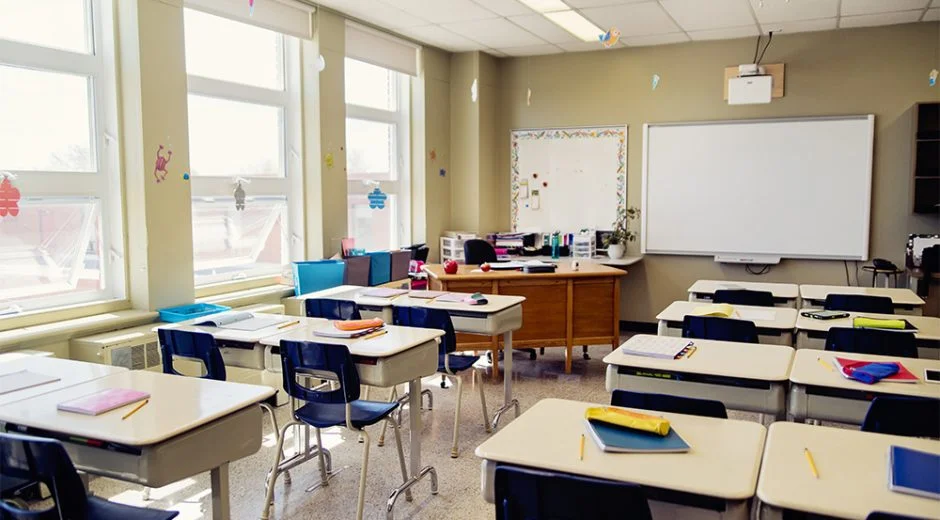Getting Your Classroom Ready
Now that you have your first days set in place before your students arrive, you will walk into a room that barely resembles a classroom with all the chairs and desks stacked to one side of the room and your desk in a random place. How do you even start to get your classroom ready for your students the first day of school?!
This can seem like a daunting task, but when everything is complete, you will begin to feel more prepared for the first day with students. This is actually where the fun begins. You have complete freedom with how you want to set up your classroom. Whatever works best for you and of course what will work best for your students. Rearranging your classroom many times over the first couple of weeks may occur, but that’s ok! Have fun and be creative.
1. Decide where desks should go
The teacher’s desk is the hub of the classroom and needs to be set up to your liking. Position your desk so that you can see every inch of the classroom and try to keep items on your desk to a minimum. You want to be an example to your students about managing your work space. Keep a section of your desk empty so that you can work with students that may come up to your desk to ask questions or an available spot for grading your papers. You will definitely need a spot to keep your coffee. After your desk is in place, organize your student’s desks. Keep a couple things in mind… Do you want them in groups of four? Will the desks be in lines? Is it a smaller group that can be made into horseshoe shape? You will set them up and move them a couple times until they feel perfect. You also might change them after the first week of school because what you thought would work, just doesn’t for your students and yourself.
2. Where to get furniture
You will probably have an idea of how you want your classroom to look and what kinds of furniture (i.e. bookshelves, cabinets) you will need in your classroom. Being a new teacher, not having that income readily available makes it a little more challenging. Take a walk around your school. There will be pieces of furniture in the halls that other teachers will not want/use. Ask around if they are available, don’t just grab someone’s chair because, I can guarantee, they will be looking for it to be returned. You can also send an e-mail to your distribution list (used to send e-mail to large groups of people) of items you are looking for and, 99% of the time, there are extras floating around that others are willing to part ways with. Keep in mind, there might be something in your room that you won’t need. Offer it in your email, as well.
3. Decorating
I used to always dream about decorating my classroom. I had all of these elaborate plans about how fun it would look, but practicality quickly took over and I might as well share it with you now. REDUCE CLUTTER! There you have it. That was easy… Your students need the least amount of distraction to be successful. Utilize your wall space for helpful information.
4. Organization
My biggest advice is to make sure everything in your room has a place. For example, where will your students turn in their papers? I suggest one place in your classroom as the hub for turning in their papers. For me, teaching middle school, I had it near the door so that they could turn it in on their way out. Similar items should live together (pencils, pens and erasers in one place). Organization of materials MUST support your classroom procedures and aid in instruction. Several options for organizational bins will be through The Dollar Tree or Dollar General. Also, don’t forget your teacher friend that seems to need a little help in the organizational department. If you help him/her with organization, it will help you as well… trust me on this one.
5. Monetary help
One of the most difficult parts of teaching is how much of your personal money will be put towards your classroom. You will be able to claim it on your taxes, so keep all of your receipts. However, there are other avenues available for covering the costs of teaching. These are called grants and you have to apply for them. Grants tend to be very specific as to what the funds will cover and have a determined range they will offer. Some grants are only available during specific semesters/times of year. Do your research and apply for anything that can benefit your classroom. You can also reach out to your school district and ask for advice on grants they see frequently. There is also a newer avenue to raise funds for your classroom. It is called “Donors Choose”. You can find it at donorschoose.org. While not a traditional grant, DonorsChoose.org is an excellent way to raise funds for your classroom. Public school teachers essentially propose classroom projects and post their proposals on the website.




